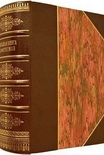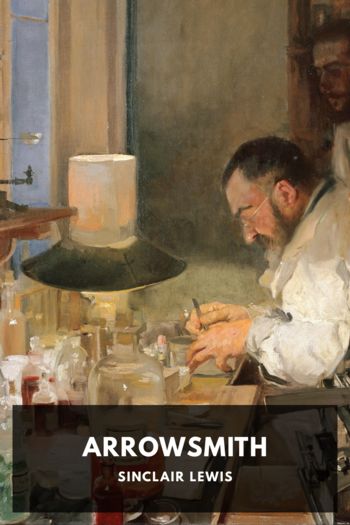Holocaust: The Nazi Persecution and Murder of the Jews, Peter Longerich [essential books to read TXT] 📗

- Author: Peter Longerich
Book online «Holocaust: The Nazi Persecution and Murder of the Jews, Peter Longerich [essential books to read TXT] 📗». Author Peter Longerich
Whilst these groups only met with very limited success, from the early 1930s
onwards the National Socialists succeeded in mobilizing their supporters on the
occasion of church elections, working in particular with the ‘Faith Movement of
German Christians’ who were opposed to ‘racial miscegenation’ and the ‘Jewish
mission’. In the church elections of November 1932 the German Christians
gathered about a third of all the votes, which roughly corresponded to the
proportion of National Socialist supporters in the population at large. 78
The Church reacted to these forces—which after all challenged the fundamental
premises of Christian belief according to prevailing theology—with sympathy and
a willingness to dialogue rather than by clearly distancing itself from them. Under
the influence of this völkisch provocation the spectrum of opinion within the
Church moved decisively to the right in the direction of völkisch and racist ideas. 79
The indirect influence of the German Christians proved to be much more
important than any direct effects they could have by virtue of their position within
the Church.
The Königsberg Church Congress of 1927 marked a caesura in the attitude of
the Protestant Church to the völkisch movement. It witnessed the presentation of
the outline for a new political theology in the paradigmatic paper given by the
theologian Paul Althaus on ‘Church and Nation’. Decisively, his lecture paved the
way for recognizing the völkisch community as part of the divine order; with this
‘theological qualification of the people the principle of the völkisch movement
received Christian legitimacy’. 80
Such theological receptiveness for points of view that took account of the people,
‘das Volk’, meant that whilst in the Weimar Republic anti-Semitism within the
Protestant Church was condemned in its overtly violent form, its underlying racist
premises were not only not rejected but accepted and even to some extent welcomed.
The purely biological concept of race was rejected as irreconcilable with the Christian
image of humanity, but the Protestant mainstream’s views on race and the racial
Anti-Semitism in the Weimar Republic
23
basis of nationhood (seen as a muddy synthesis of ‘blood’ and ‘spirit’) had already
been influenced to a high degree by biologistic racial dogma.
After the end of the First World War Catholicism also increasingly came to see
‘Volk’ and ‘nationhood’ as components of the divine order of creation. The
Catholic concept of nationhood was not for the most part based on ideas of
race, however, and it did stress its distance from the völkisch camp. Catholic
authors did not rely on a material or biological concept of nationhood based one-
sidedly on ‘blood and soil’ ideas but strove to emphasize the ‘spiritual’ element
within their conception of nation. However, they were prepared at the same time
to acknowledge biological ‘facts’ and the Catholic conception of nation thus drew
nearer to the related concepts of race used within völkisch discourse. 81 The religious anti-Semitism that featured in Catholic circles could therefore be
stretched far enough to permit calls for refusing equality of citizenship to Jews
from this quarter, too. 82
The exclusion of Jews from German citizenship was publicly called for at the
end of the 1920s and in the early 1930s by a whole series of prominent right-wing
intellectuals. What is most remarkable is that a series of leading supporters of the
‘conservative revolution’—the intellectual scene that became part of the ‘new
right’ in the early 1930s—had intensified their anti-Jewish attitudes. Whilst they
had made unambiguously anti-Semitic comments in the 1920s but had not
supported the removal of citizenship from the Jews (indeed had sometimes
vociferously opposed it), now they formed part of the growing chorus of propon-
ents of this measure. This group included Wilhelm Stapel, Editor in Chief of
the newspaper German Nation and organizer of the educational sections of the
German National Association of Commercial Employees. Stapel was one of
the most influential original thinkers in the völkisch camp and represented a
‘cultural’ concept of nationhood rather than one based one-sidedly on racism.
Stapel’s close colleague Albrecht Günther similarly joined the group of those
proposing that Jews be deprived of citizenship. 83
Ernst Jünger, the successful author of popular war literature and one of the
leading figures in the intellectual right, wrote programmatically in 1930 that a Jew
living in Germany would soon ‘be faced with his final choice: being a Jew in
Germany or not being a Jew’, implying that he also believed in the need for a
special status for Jews. 84
The views quoted here were expressed in a series of anthologies or special
numbers of periodicals dedicated to the ‘Jewish question’ and published in the
early 1930s. For example, the September 1930 edition of the Süddeutsche Monat-
shefte was devoted to the ‘Jewish question’. They were the vehicles for anti-Semites
of various hues to give voice to their views, but they also published opponents of
anti-Semitism and leading Jewish commentators. These discussions show very
clearly how the radical anti-Semites had succeeded in putting the solution to the
‘Jewish question’ onto the political agenda, in one form or another.
24
Historical Background
An important stage in the onward march of radical anti-Semitism was the
spread of the anti-Jewish boycott movement from the mid-1920s onwards in a
variety of different fields of life. There were traces of a systematic boycott of
Jewish businesses organized by anti-Semitic circles evident even in Imperial
times, especially at Christmas, but it was very substantially intensified during
the Weimar Republic, not least in the ‘stable’ period. Although the Centralverein
succeeded in obtaining court judgements against the boycott in a large number
of cases, reports in its newspapers show that the boycott movement was
growing. 85
Local National Socialist papers had begun openly encouraging the boycott of
Jewish businesses since the end of the 1920s. 86 The boycott became a regular part of National Socialists’ local strategies for gaining power in many areas, 87 and from 1931–2 took on a violent form: customers were prevented from entering shops,
windows were smashed, and the owners of shops threatened. 88
The organized boycott of Jewish businesses reached a high point at Christmas
1932. In September of that year the Centralverein identified an office within the
National Socialist leadership that was centrally organizing the boycott. 89 The fact that it was already taking on the form of a violent blockade became very clear
when the Minister of the Interior from Hesse answered a parliamentary question
at the beginning of December by saying that ‘the current large-scale campaigns
against Jewish business people .





Comments (0)